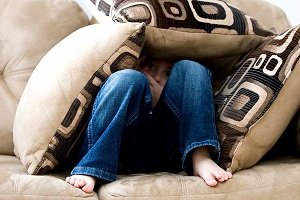How to Get Rid of Seasonal Affective Disorder (SAD)
TweetSAD is a mood disorder associated with depression episodes and related to seasonal variations of light.
Seasonal Affective Disorder (SAD) tends to affect most people throughout their life and some of us probably don't even know it. Some have given the name "the Holiday Blues" to what we now call SAD, or Winter Depression.
Some patients repeatedly develop a depressive disorder at the same time of year, usually the autumn or winter. In some cases the timing reflects extra demands placed on the person at a particular season of the year, either in his work or in other aspects of his life. In other cases there is no such cause and it has been suggested that seasonal affective disorder is related in some way to the changes in the seasons, eg, to the length of daylight. Although these seasonal affective disorder are characterized mainly by the time at which they occur, some symptoms are said to occur more often than in other mood disorders. These symptoms are:
- hypersomnia
- increased appetite with carving for carbohydrate.
This condition is often called "winter blues." A reaction to lack of sunlight in winter, mild or major depression develops in late fall and clears up in early spring. As distance from the equator increases, this condition becomes more common. In the northern hemisphere, December, January, and February are the worst months.
What is the Cause of Seasonal Affective Disorder?
It is caused by a biochemical imbalance in the hypothalamus due to the shortening of daylight hours and the lack of sunlight in winter.
As seasons change, there is a shift in our "biological internal clocks" or circadian rhythm, due partly to these changes in sunlight patterns. This can cause our biological clocks to be out of "step" with our daily schedules. The feelings of depression will usually be at worst in the afternoon and at night.
Sufferers with this form of depression become ill when the days grow shorter and they are deprived of as much sunlight as they need. Many sufferers have found that taking holidays somewhere sunny in winter helps.
Seasonal Affective Disorder symptoms
The typical symptoms of SAD include:
- depression
- a craving carbohydrate foods such as cakes, potatoes and chocolate, and are therefore likely to gain weight rather than lose it.
- anxiety
- lack of energy
- increased need for sleep,
- Some individuals experience great bursts of energy and creativity in the spring or early summer.
However in some people the effect of S.A.D. can be quite severe, and bring about symptoms of depression that interfere with normal daily functioning.
Seasonal Affective Disorder treatment
The good news is that it is usually able to be appropriately treated with very minimal effort or side-affects. In addition, it is important for the person with SAD to get as much natural light(light therapy) as possible.
-
Seasonal Affective Disorder - Light Therapy
This is the most effective treatment for Seasonal Affective Disorder. As the cause is lack of bright light, the treatment is to be in bright light every day by using a lightbox or a similar bright light therapy device. (Going to a brightly-lit climate, whether skiing or somewhere hot, is indeed a cure). One study found that an hour's walk in winter sunlight was as effective as two and a half hours under bright artificial light.
-
Seasonal Affective Disorder - Medication
SSRI (Selective Serotonin Reuptake Inhibitors--Paxil, Zoloft etc.) have been shown to be effective in SAD and in some cases of PMS. Some people prefer to take a pill because it is less time consuming than sitting in front of a light box. Some individuals need a combination of light therapy, medication, and psychotherapy. For those with winter depression and spring-summer mania, a mood stabilizer such as Lithium may be useful.
-
Seasonal Affective Disorder - Therapy
Psychotherapy, counseling or any complementary therapy which helps the sufferer to relax, accept their illness and cope with its limitations are extremely useful.
Psychotherapy can help the depressed individual look at her depressive assumptions and negative expectations. It can also help one identify relationship difficulties so that interpersonal mistakes might not be repeated.
-
Seasonal Affective Disorder - Self Help
Daily exercise has been shown to be helpful, particularly when done outdoors. For those who tend to crave sweets during the winter, eating a balanced diet may help one's mood. Conversely, as the mood improves, craving for sweets may abate.
Facts and Tips about Seasonal Affective Disorder
- Seasonal affective disorder is mood disorder in which deviations occurred in mood of person when season changes.
- These patients may have diminutive energy, need sweets, eat stuffy food and habit of sleep at any time.
- Depression and deviations in mood mostly occurred in winter season and less in other seasons.
- Because of neurological dysfunction and hormonal changes person may suffer from seasonal affective disorder.
- Light therapy and anti-depressant drugs are definitely diminish symptoms of this disorder.
- Make better mood with yoga and relaxation exercise.
- Walk in the open air and spend more time in the garden will reduce your sad mood or depression.
Seasonal Affective Disorder- light therapy


Sometimes crying or laughing
are the only options left,
and laughing feels better right now.

Current Issue
 Self Help Leaflets Take the help of our self help leaflets or booklets. |
 The DG Magazine All about living with depression |


















